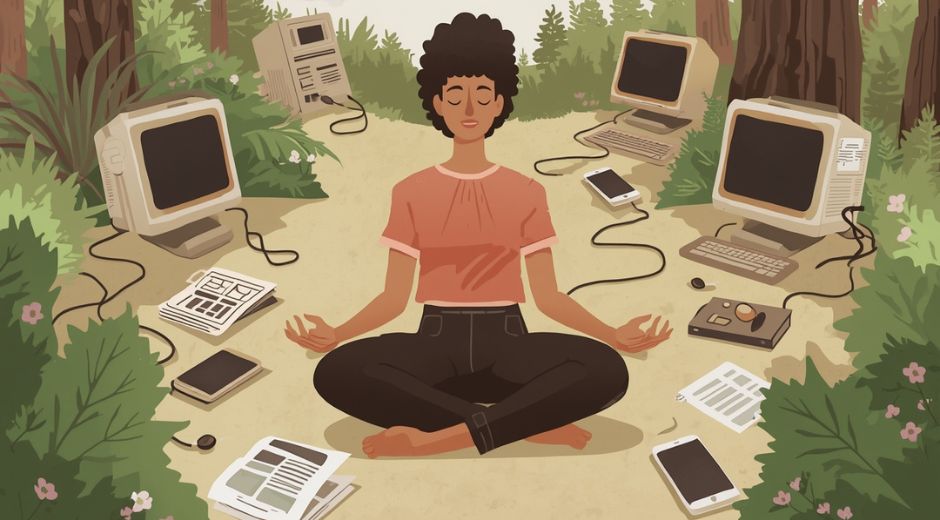7 Surprising Benefits of Reverse Walking for Your Body and Mind | Health & Wellness 2025
7 Surprising Benefits of Reverse Walking for Your Body and Mind
Walking is one of the simplest forms of exercise, but have you ever tried walking backward? Reverse walking, also known as retro walking, is gaining attention for its unique benefits that extend beyond what forward walking can offer. This unconventional form of movement not only challenges your muscles in new ways but also provides surprising advantages for your brain and overall well-being.
In this article, we’ll uncover seven surprising benefits of reverse walking for your body and mind, backed by scientific insights and expert advice. Whether you’re a fitness enthusiast or someone looking for a new way to stay active, reverse walking might just be the game-changer you need.
1. Enhances Muscle Strength and Balance
Reverse walking activates different muscle groups compared to forward walking. The quadriceps, calves, and shins work harder during backward movement, helping to strengthen your lower body in a balanced way. Moreover, reverse walking requires increased coordination and balance, which engages your core and stabilizer muscles.
Studies have shown that incorporating reverse walking into your routine can improve proprioception — your body’s ability to sense movement and position. This can reduce the risk of falls, especially for older adults or those recovering from injuries. (Learn more about balance training at Chronostual.com)
2. Boosts Cardiovascular Fitness
Though it might seem less intense, reverse walking actually raises your heart rate more than regular walking at the same pace. This increased cardiovascular demand makes it an excellent way to improve heart health and endurance without high-impact strain.
Reverse walking can serve as a low-impact interval training exercise, helping to enhance aerobic capacity while reducing joint stress. For people with arthritis or joint concerns, this is an effective way to build cardiovascular fitness safely.
3. Improves Mental Focus and Cognitive Function
Navigating backward naturally demands more concentration and spatial awareness. This increased mental engagement stimulates neural pathways in the brain, promoting better focus, memory, and cognitive flexibility.
Recent research suggests that exercises requiring coordination and complex motor skills, such as reverse walking, help improve brain plasticity — the brain’s ability to adapt and form new connections. This can support mental sharpness and even delay cognitive decline. (Read more about brain health at Zoopora.com)
4. Aids in Injury Rehabilitation and Pain Relief
Reverse walking is commonly used in physical therapy settings to aid recovery from injuries, particularly in the knees and hips. Because it shifts the loading patterns on joints and muscles, it can reduce strain on injured areas while still promoting strength and mobility.
Therapists often recommend retro walking for patients recovering from ACL injuries or post-surgical rehab. It can also help alleviate chronic pain conditions by improving joint mechanics and promoting blood flow to affected tissues.
5. Enhances Calorie Burn and Weight Management
Surprisingly, reverse walking burns more calories than forward walking at the same speed. The increased effort required to maintain balance and propel yourself backward means your body works harder, thus elevating calorie expenditure.
Adding reverse walking to your fitness regimen can boost your metabolism and support weight management goals, all while offering variety to prevent workout boredom.
6. Strengthens Mental Resilience and Reduces Stress
Engaging in a novel physical activity like reverse walking challenges your comfort zone, which can build mental resilience. The focus and mindfulness required can help reduce stress and anxiety, promoting a sense of accomplishment and well-being.
Outdoor reverse walking in green spaces has the added benefit of nature exposure, which is proven to enhance mood and reduce cortisol levels.
7. Improves Posture and Gait Mechanics
Regular practice of reverse walking encourages proper posture as you need to maintain an upright position without looking forward. This awareness can translate to improved walking form overall, reducing slouching and enhancing gait efficiency.
Better posture helps prevent back and neck pain, and can improve breathing and energy levels throughout the day.
How to Start Reverse Walking Safely
If you’re new to reverse walking, start slow and choose a safe environment, like a flat, open space free from obstacles. Use a wall or railing for support if needed and focus on controlled, deliberate steps.
Begin with short sessions, just a few minutes at a time, gradually increasing duration and intensity as you gain confidence and strength. Always listen to your body and stop if you feel discomfort or dizziness.
Expert Insights and Resources
Reverse walking is gaining popularity in fitness and rehab circles, with many experts highlighting its multifaceted benefits. To dive deeper into the science and practical tips, check out these resources:
Chronostual.com — Expert articles on balance and rehabilitation techniques.
Zoopora.com — Brain health and cognitive function research.
For building a comprehensive fitness routine incorporating innovative exercises like reverse walking, visit FinanceWorldHub.com for expert advice on wellness and lifestyle strategies.
Conclusion
Reverse walking is a surprisingly powerful exercise with benefits that go far beyond what most expect. From enhancing muscle strength and cardiovascular fitness to improving mental focus and aiding injury recovery, it offers a holistic boost to your body and mind.
Incorporating reverse walking into your routine can add variety, challenge, and new pathways to wellness. Whether you’re looking to improve balance, burn extra calories, or sharpen your cognitive skills, taking a few steps backward might just be the way forward to a healthier you.
The Pulse of Sport

Economic Blocs: How Regional Alliances Are Redefining Global Power
Economic Blocs: How Regional Alliances Are Redefining Global Power examines how nations unite through trade and policy to shape the world economy.

Blue Zones: Unlocking the Secrets of Longevity and Purposeful Living
Blue Zones: Unlocking the Secrets of Longevity and Purposeful Living explores how specific communities thrive through balance, purpose, and healthy habits.

Soundscapes: How Sonic Design Shapes Emotion and Immersion in Modern Culture
Soundscapes: How Sonic Design Shapes Emotion and Immersion in Modern Culture explores how music, noise, and silence influence perception and creativity.













